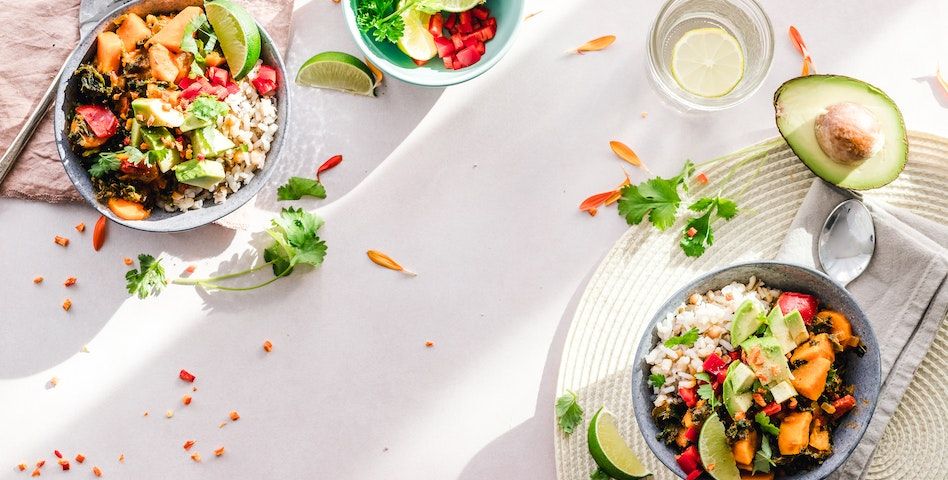Balanced Meal: Things We Can't Miss Eating
In the hustle and bustle of our daily lives, maintaining a balanced diet often takes a back seat. However, the importance of a balanced meal cannot be overstated. It provides our bodies with the necessary nutrients, energy, and sustenance to thrive. In this blog, we'll explore the key components of a balanced meal and why they are vital for our well-being. Just like organizing the essentials in a bag, understanding the elements of a balanced meal and where to incorporate them is crucial for our health.
The Foundation: Fruits and Vegetables
Imagine fruits and vegetables as the sturdy base of your meal, much like the foundation of a well-structured bag. They provide a wealth of vitamins, minerals, and dietary fiber that are essential for overall health. Incorporate a variety of colorful fruits and vegetables into your meals. Keep them at the forefront of your plate, just as you would prioritize the most important items in an accessible pocket. Whether it's a fresh salad, a side of steamed broccoli, or a fruit salad for dessert, these should form a significant part of every meal.

Protein Power: Lean Sources of Protein
Proteins are the structural elements of our bodies, and they play a crucial role in various bodily functions. Much like valuable items you'd keep in a secure zippered compartment, lean sources of protein deserve special attention. Include options like skinless poultry, fish, tofu, beans, or lean cuts of meat in your meal. They provide essential amino acids while keeping saturated fats in check. Consider this compartment your protein powerhouse for sustained energy and muscle repair.
Carb Central: Whole Grains
Carbohydrates are your body's primary source of energy. Think of them as the central compartment in your bag where you keep your daily essentials. But not just any carbs - prioritize whole grains. Whole grains like brown rice, quinoa, whole wheat pasta, and oats offer complex carbohydrates, fiber, and important nutrients. They release energy gradually, helping you stay full and energized throughout the day. Incorporate whole grains as the base of your meal or as a side dish.
Healthy Fats: Essential Oils
Much like the way a bag's exterior shines with stylish designs, healthy fats add a touch of flavor and essential nutrients to your meal. Avocado, nuts, seeds, and olive oil are examples of healthy fats that should have a dedicated place on your plate. These fats provide omega-3 fatty acids and vitamin E, promoting heart health and overall well-being. Use them in dressings, as toppings, or as cooking oils to enhance both taste and nutrition.
Calcium Corner: Dairy or Dairy Alternatives
Just as specific pockets are designed for your wallet and phone, calcium-rich foods or alternatives deserve their own designated corner in your meal plan. Calcium is crucial for maintaining strong bones and teeth. Incorporate dairy products like milk, yogurt, and cheese, or opt for dairy alternatives like almond milk or soy yogurt if you're lactose intolerant or vegan. Ensure your daily intake of calcium is met to support your bone health.

Hydration Station: Water
While it may not be an element in a bag, water is an indispensable component of a balanced meal. Think of it as the refreshing sip you take throughout the day to keep yourself hydrated. Water is essential for digestion, circulation, temperature regulation, and overall health. Make it a habit to keep a water bottle with you and take regular sips throughout the day. It's the most crucial element of your meal plan and should never be overlooked.
The Sweet Finale: Occasional Treats
Lastly, in a well-organized bag, there's always a little space for occasional indulgences. Similarly, in your balanced meal plan, there's room for occasional treats. While it's essential to prioritize nutritious foods, it's perfectly fine to enjoy a sweet or savory treat now and then. The key is moderation. Treats add a touch of enjoyment to your meal but should not dominate your plate.

Conclusion
A balanced meal is like a well-structured bag, with each component having its designated place and purpose. Just as you wouldn't leave your essentials scattered in your bag, you shouldn't neglect any of these vital components of a balanced meal. Fruits and vegetables form the base, lean proteins deserve special attention, whole grains provide the central energy, healthy fats add flavor, calcium ensures strong bones, water keeps you hydrated, and occasional treats bring joy.